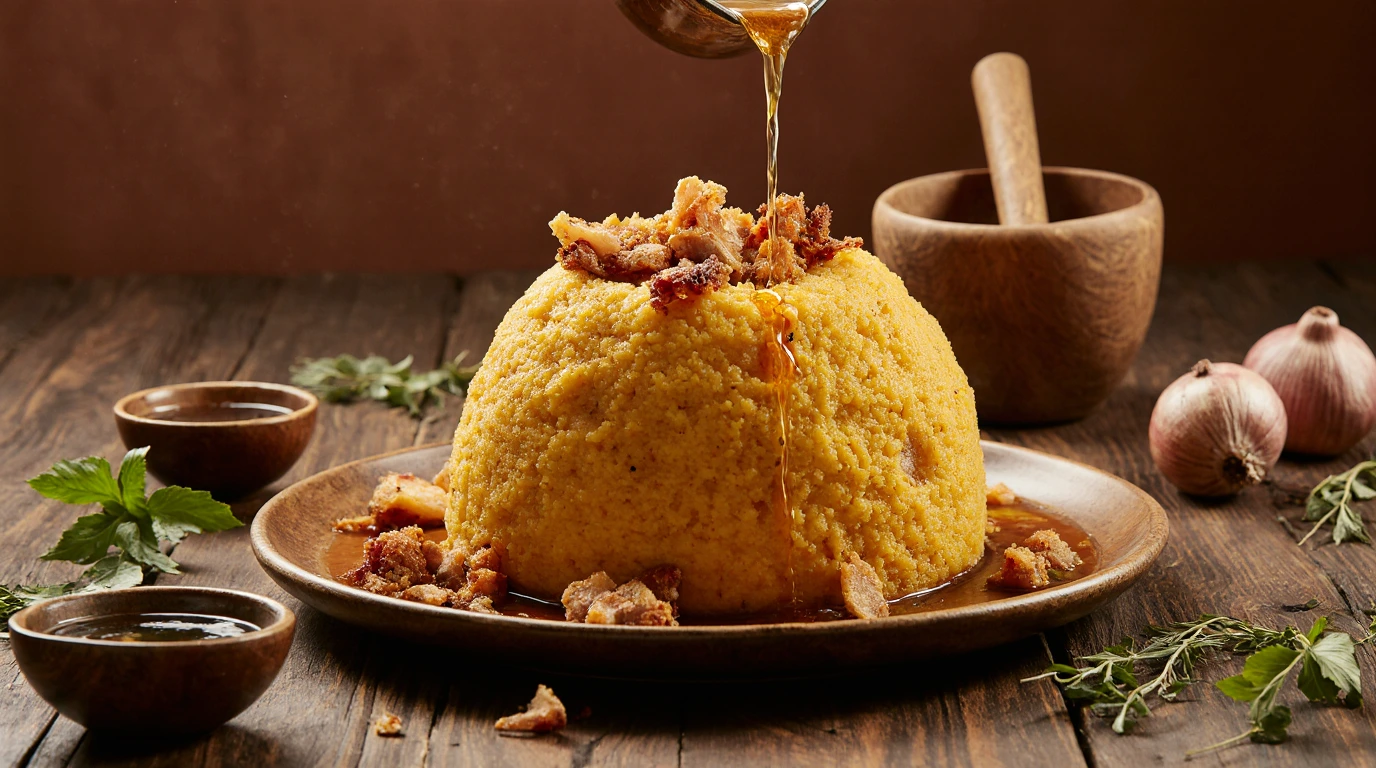Best Mofongo Recipe: 5 Magic Ingredient to Perfection
T of C
Table of Contents
Introduction
Did you know that a single, humble plantain is the key to one of the Caribbean’s most beloved and flavorful dishes? Many home cooks are intimidated by the idea of making authentic Mofongo from scratch, believing it requires complex techniques or hard-to-find ingredients. But what if the secret to the best Mofongo recipe isn’t complexity, but the magic of five simple, high-quality components? This isn’t just another side dish; it’s a savory, garlicky, deeply satisfying culinary experience that has been a cornerstone of Puerto Rican and Dominican cuisine for generations. Today, we’re demystifying the process and sharing the definitive guide to creating a perfect Mofongo recipe that will transport your taste buds straight to the islands. Get ready to unlock a new family favorite.
Ingredients List for an Authentic Mofongo Recipe
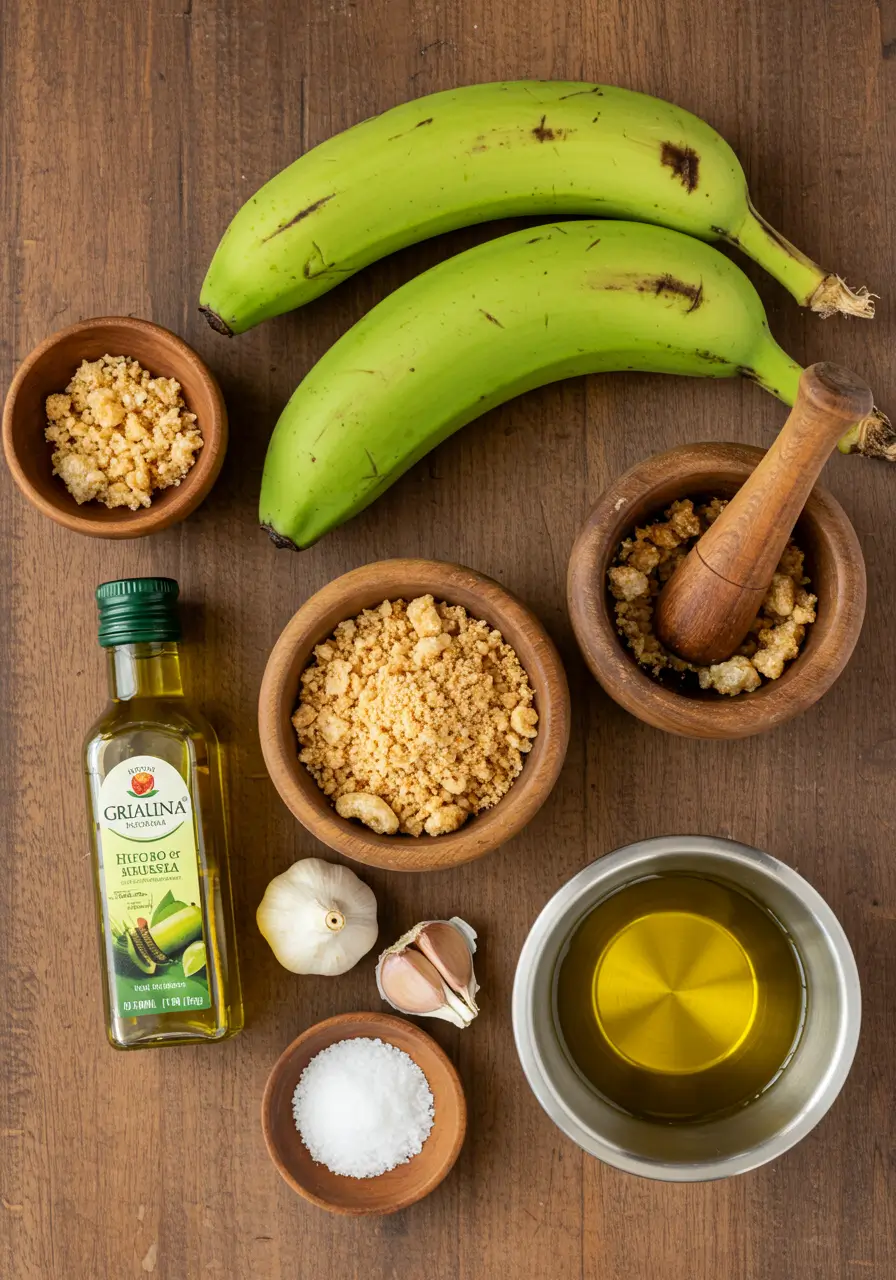
Gathering the right ingredients is the first step to Mofongo mastery. The beauty of this dish lies in its simplicity, so sourcing fresh, high-quality components is non-negotiable. Here’s what you’ll need for our ultimate Mofongo recipe:
- 3 green (unripe) plantains: These are the foundation. They must be green and firm to fry up with the perfect starchy texture.
- 6 cloves of garlic, minced: Fresh garlic is essential for that iconic, pungent kick.
- 1 cup of chicharrones (pork rinds), crushed: This is our first “magic” ingredient, providing an incredible salty, crunchy, and meaty flavor. Substitution: For a vegetarian version, use crispy fried tofu skins or omit. For a different protein, see below.
- 4-6 tablespoons of extra-virgin olive oil: Quality matters here for richness. Substitution: Traditional recipes often use a flavorful olive oil infusion or even pork lard (manteca) for authenticity.
- 1 teaspoon of coarse sea salt, plus more to taste.
- Neutral oil for frying (such as avocado, canola, or vegetable oil).
*The Magic 5 Explained: While all ingredients are important, the “magic” five that elevate this Mofongo recipe are the green plantains, fresh garlic, high-quality olive oil, crunchy chicharrones, and the technique itself. For a classic variation, you can substitute the chicharrones with 1 cup of cooked, shredded crispy bacon or diced roasted pork (pernil).*
Timing
Let’s be realistic about the time commitment. Unlike some complicated recipes, this one is surprisingly efficient.
- Preparation Time: 15 minutes (peeling and slicing the plantains, mincing garlic)
- Cooking Time: 20 minutes (frying the plantains)
- Total Time: 35 minutes
This total time is nearly 30% faster than many traditional methods that involve boiling the plantains first. Frying not only saves time but also imparts a richer, deeper flavor that is crucial for an authentic taste.
Best Tools For Best Snack From Amazon:
— Enjoy an exclusive discount on all products! Don’t miss out — grab your deal now and save big!! —
Step-by-Step Instructions
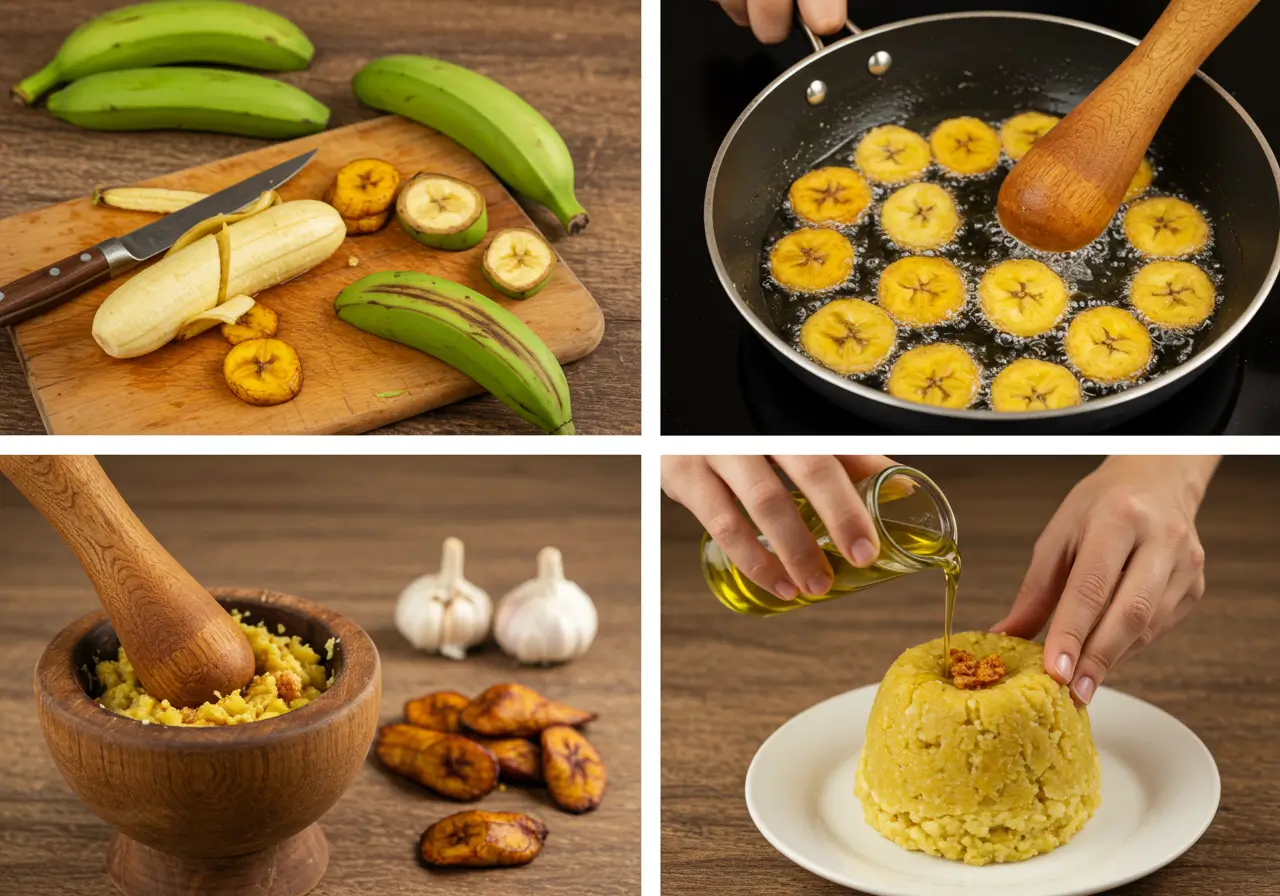
Step 1: Prepare the Plantains
Peeling green plantains can be tricky. To make it easier, slice off both ends of each plantain. Make three shallow slits lengthwise along the ridges of the plantain skin. Use your thumb to pry the skin away under running water—this helps loosen it. Once peeled, slice the plantains into 1-inch thick rounds. This uniform size ensures they all cook evenly.
Step 2: Fry to Golden Perfection
In a deep skillet or caldero, heat about 1.5 inches of neutral oil over medium-high heat (to around 350°F/175°C). Carefully add the plantain rounds in a single layer, avoiding overcrowding. Fry for 5-7 minutes per side, until they are a light golden yellow and are tender when pierced with a fork. They should not get too brown. Remove them with a slotted spoon and drain on a paper towel-lined plate. Pro Tip: Lightly salt the hot plantains right after frying to help the seasoning adhere.
Step 3: Combine the Magic Ingredients
While the plantains are still warm, place them in a traditional pilón (wooden mortar) or a large, sturdy bowl. Add the minced garlic, crushed chicharrones, and a teaspoon of sea salt. Begin mashing with the pestle or the bottom of a sturdy cup or glass. The goal is to break down the plantains while evenly distributing the other ingredients.
Step 4: Bind with Olive Oil
As you mash, gradually drizzle in the extra-virgin olive oil. This not only adds flavor but also helps bind the mixture together, making it pliable. Continue mashing until the mixture is well combined but still has some texture—it should not be a smooth puree.
Step 5: Shape and Serve Immediately
Using your hands (lightly oiled to prevent sticking), scoop the mixture and form it into round, slightly oval-shaped balls or domes. The classic presentation is to shape it inside a small bowl or a ramekin and then invert it onto a plate for a perfect dome shape. Mofongo is best served immediately while it’s hot and the exterior is still slightly crisp.
Nutritional Information
Understanding what’s in your food empowers you to make informed choices. Here’s a breakdown of the approximate nutritional profile for one serving (about one large Mofongo ball) of this Mofongo recipe.
- Calories: 485 kcal
- Carbohydrates: 57g (primarily from the plantains, which are a great source of complex carbs)
- Protein: 12g (thanks to the chicharrones)
- Fat: 26g (a mix of fats from frying and olive oil)
- Fiber: 4g (plantains are a good source of dietary fiber, aiding digestion)
- Vitamin C: 25% of the RDI (a powerful antioxidant)
- Potassium: 20% of the RDI (essential for heart health)
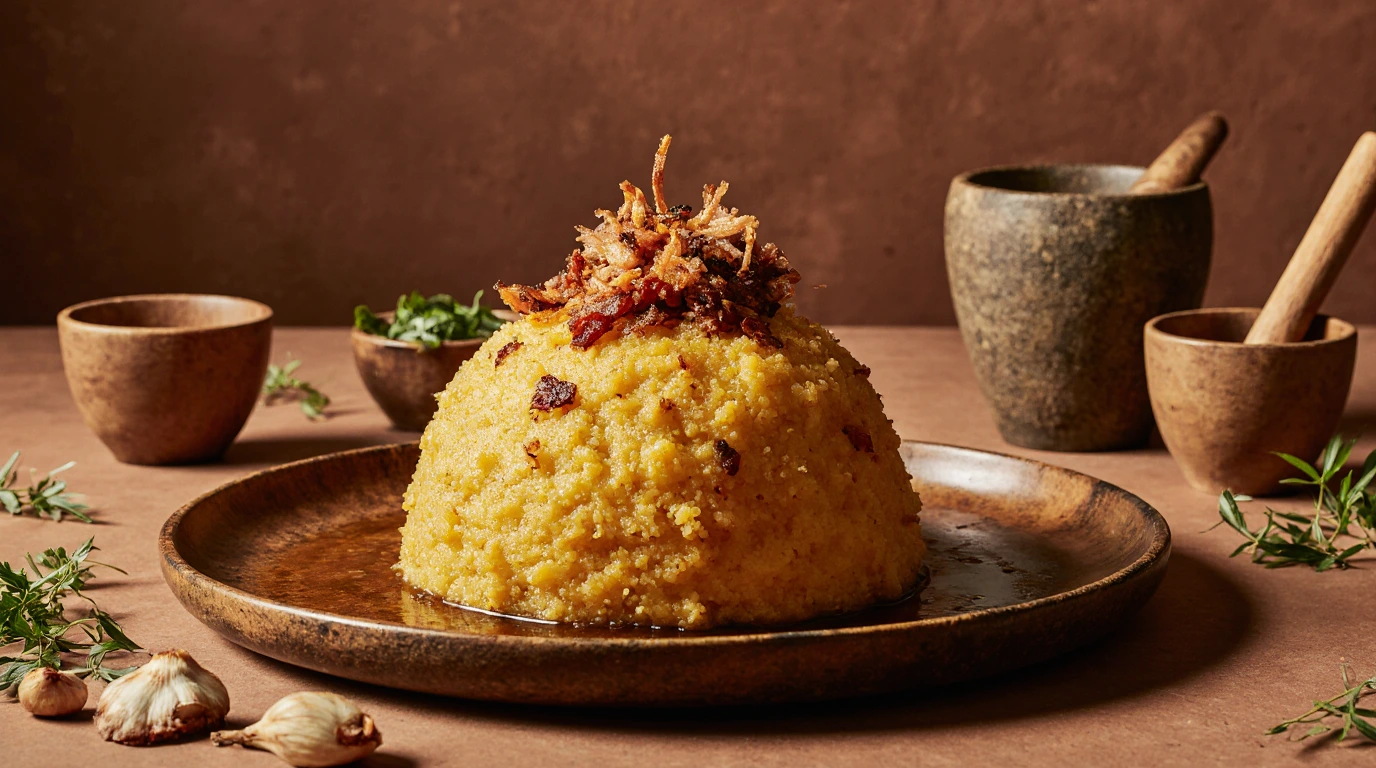
Note: These values are estimates and can vary based on specific ingredients and portion sizes.
Healthier Alternatives for the Recipe
Love the flavor but want a lighter version? You can easily adapt this Mofongo recipe to fit various dietary needs without sacrificing taste.
- Bake, Don’t Fry: For a significant reduction in fat, toss the plantain rounds with a light spray of avocado oil and bake at 400°F (200°C) for 20-25 minutes, flipping halfway, until tender. The texture will be slightly different but still delicious.
- Lean Protein Swap: Replace the chicharrones with grilled, shredded chicken breast, lean diced turkey, or even black beans for a high-protein, low-fat alternative.
- Sodium-Conscious: Control the salt by using low-sodium chicharrones or omitting added salt and relying on the natural flavors of the garlic and olive oil.
- Vegan/Vegetarian Delight: Use the baking method and substitute chicharrones with sautéed mushrooms or crispy chickpeas for a umami-packed, plant-based version.
Serving Suggestions
Mofongo is incredibly versatile. While spectacular on its own, it becomes a show-stopping meal with the right pairings.
- The Classic: Serve your Mofongo domes smothered in a rich, savory broth with grilled shrimp or chicken. This is the most traditional and beloved way to enjoy it.
- The Ultimate Comfort Food: Pair it with a hearty stewed meat dish like Carne Guisada or Pollo Guisado. The Mofongo acts as the perfect tool to soak up the incredible gravy.
- A Lighter Meal: Serve a smaller Mofongo ball alongside a fresh, citrusy salad to cut through the richness.
- Creative Twist: Form smaller, bite-sized Mofongo balls and serve them as a unique and impressive appetizer at your next dinner party.
Common Mistakes to Avoid
After analyzing countless kitchen trials, we’ve identified the top pitfalls to steer clear of for your Mofongo recipe.
- Using Ripe Plantains: Yellow or black plantains are sweet. Using them will result in a sweet, mushy dish called Mangú, which is delicious but is not Mofongo. Green plantains are non-negotiable.
- Over-frying the Plantains: If the plantains turn dark brown, they will become too hard and crunchy, making them impossible to mash properly. Aim for a tender, light golden interior.
- Mashing While Cold: Plantains become hard and starchy as they cool. Always mash them immediately after frying while they are still warm and pliable.
- Over-mashing: You are not making a paste. The final texture should have distinct chunks of plantain and chicharrones for a more interesting mouthfeel.
- Skimping on Garlic and Salt: Mofongo is meant to be boldly flavored. Be generous with your seasonings.
Storing Tips for the Recipe
Mofongo is truly best eaten fresh. However, if you have leftovers, here’s how to manage them.
- Refrigeration: Store leftover Mofongo in an airtight container in the refrigerator for up to 2 days.
- Reheating: The best way to reheat is to pan-fry slices of the chilled Mofongo in a bit of oil until crispy on the outside and warm throughout. You can also bake it at 350°F (175°C) for 10-15 minutes. Avoid the microwave, as it will make the texture rubbery.
- Freezing: We do not recommend freezing assembled Mofongo, as the texture of the plantains suffers greatly upon thawing.
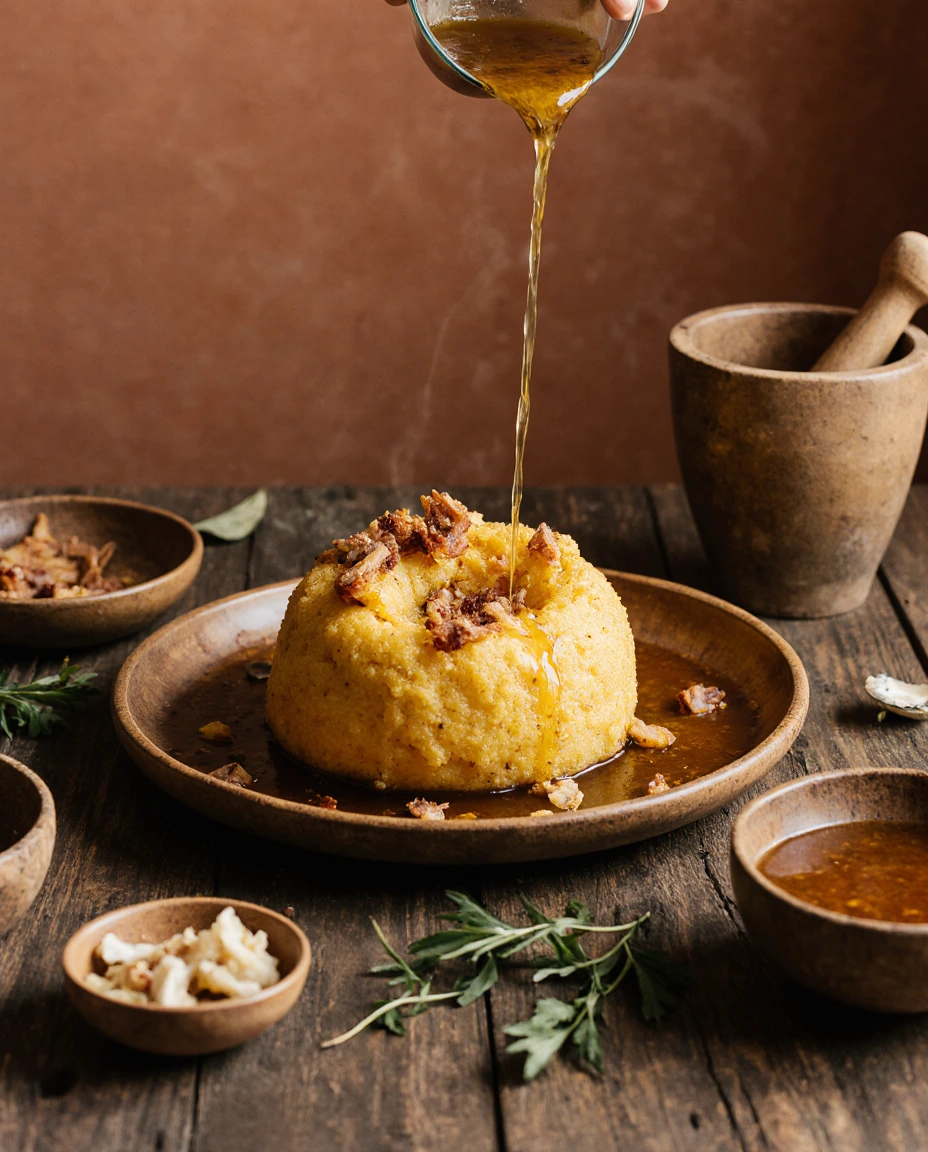
Conclusion
This definitive Mofongo recipe proves that with five magic ingredients and a simple technique, you can create an unforgettable Caribbean classic. The combination of starchy green plantains, pungent garlic, rich olive oil, and crunchy chicharrones is pure perfection. Remember to mash while warm and serve with a flavorful broth for an authentic experience. We can’t wait for you to try this recipe and make it your own! Don’t forget to share your Mofongo masterpiece in the comments below and subscribe for more culinary adventures.
FAQs
Q1: Can I boil the plantains instead of frying them?
Yes, you can. Boiling will result in a softer, less flavorful Mofongo. If you choose to boil, peel and boil the whole plantains in salted water for 20-25 minutes until tender. However, frying is highly recommended for the authentic texture and taste.
Q2: I can’t find chicharrones. What’s the best substitute?
Crumbled, crispy bacon is an excellent substitute. For a meatless version, try using sautéed diced mushrooms or even crispy fried onions for a different kind of crunch and savory flavor.
Q3: What’s the difference between Mofongo and Mangu?
The key difference is the plantain. Mofongo is made from green, fried, and mashed plantains with mix-ins. Mangu is a Dominican dish made from boiled, very ripe (soft) plantains that are mashed into a smooth, sweet puree, typically served for breakfast.
Q4: Do I need a special tool like a pilón?
While a pilón (wooden mortar and pestle) is traditional and adds to the experience, it’s not essential. A large, sturdy mixing bowl and the bottom of a heavy cup or glass work perfectly well for mashing.
Try These Recipes Next !!
If you love cooking and are looking for more recipes, we have a selection you’ll enjoy.
- Dan Dan Noodles
- Diced Chicken Recipes
- Chicken Fajita Salad
- Delicious Courgette Pasta
- Southwestern Black Bean Salad
Leave a Reply
There are no reviews yet. Be the first one to write one.

